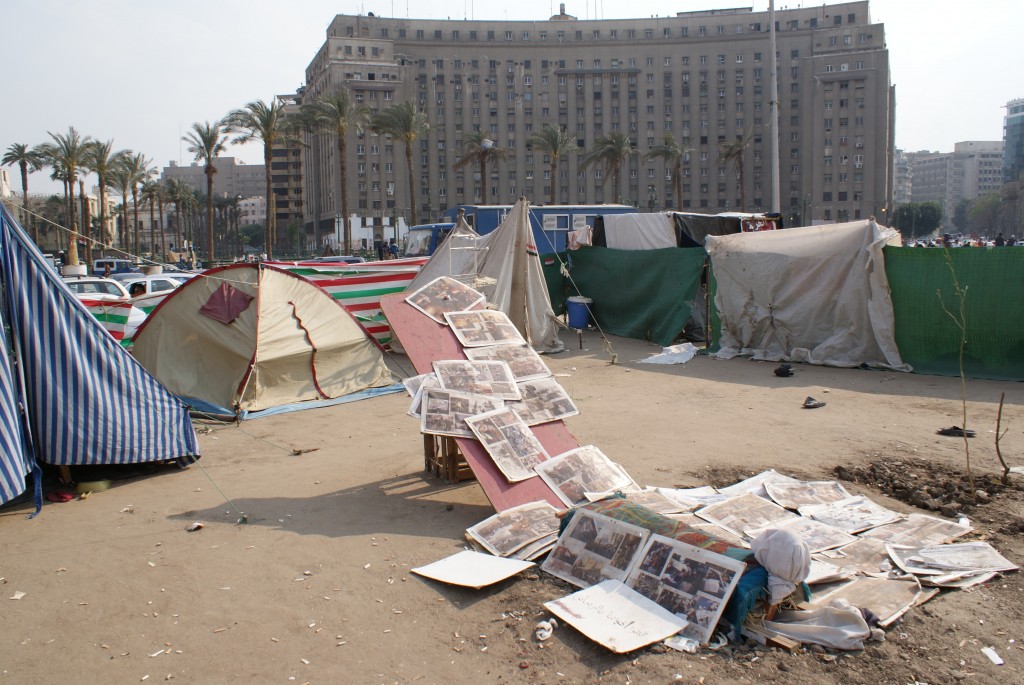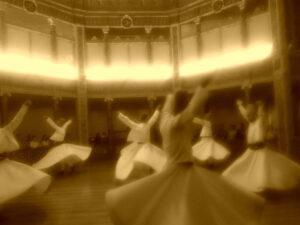Tahrir Square: For the sake of the forsaken
By Osama Diab
For ordinary Egyptians, Tahrir is now a terrifying black hole, but for its marginalised occupiers, it is a liberator from political and social tyranny.
Wednesday 27 February 2013

“Do you like what's happening in Tahrir?” taxi drivers ask me everyday on my way back from work, which is near the world-famous square. Fed up with this discussion and my inability to make any “acceptable” argument prompted me to consider moving somewhere that was within walking distance from my office.
For someone who has supported the revolution from the very beginning and throughout its different stages, and against the various counterrevolutionary forces – the remnants of the Mubarak regime, the military and the Muslim Brotherhood – this period has been the most difficult when it comes to trying to sell and promote the revolution.
Any frequent visitor to Tahrir will notice a change in its demographic composition. The face of this highly symbolic square and its surrounding area has changed beyond recognition over the past two years. Before the revolution erupted, Tahrir was a symbol of state might and prestige, with high-ranking police officers aggressively managing the traffic flow of cars and pedestrians through and around the capital's most strategic spot.
Within a kilometre of Tahrir in every direction is the highest concentration of state institutions in the country. The monolithic symbol of state bureaucracy, the Mugama'a, the parliament with its two houses, a large number of ministries (including the monstrous Ministry of Interior) are all located on the different ends of the Tahrir square area. The neighbourhood is also home to some of Egypt's oldest and most luxurious five-star hotels overlooking the Nile, not to mention the famous Egyptian museum, the Arab league building and the former ruling National Democratic Party's headquarters.
How did this area of potent political power and tight state control descend into a state of lawlessness is beyond most people's comprehension. Many Egyptians now choose to avoid the area altogether while others are curious about who occupies and controls it. The motivation behind the recent clashes with the police during the revolution's second anniversary were unclear even to the most competent of political analysts and to opposition forces. It is a defining characteristic of a revolution for events to move faster than the ability of most people to grasp them.
Many of those who occupy and control Egypt's most institution-laden area are the country's forsaken: street vendors, homeless teenagers and street children. They have replaced the generals, the police informants and government politicians who used to be in control just two years ago.
Tahrir moved from being the establishment's headquarters to an area that is becoming rife with anti-establishment behaviour. It attracts the homeless, including children, rebel female activists, homosexuals, street vendors, substance abusers, etc. The groups who were the most marginalised for different reasons have found a refuge in an area completely liberated from oppressive state and societal authority. The occupation of Egypt most strategic square kilometre is a reminder of a triumph of the oppressed over the oppressor. For the outsider, Tahrir might have turned into a frightening, dark, and dirty black hole but for its occupiers it's a breeze of freedom manifested in the absence of unjust authority.
The changing demographic make-up of Tahrir Square has turned it into a different world. No longer does it relate to the outer world where the state is gradually reemerging and playing its typical role of trying to control and dominate the public sphere. While the revolution outside of Tahrir is mostly defined as its first 18 days, in Tahrir, it has no clear start or end. It's an ongoing feud with the authorities, society and the state. It is the fight of the marginalised to claim, even to grab, their share of the public sphere.
The revolution is no longer a well-packaged commodity produced by the so-called “Facebook generation”. It's no longer a unified movement of educated and politically aware young voices who are able to organise, brand, rebrand and promote the revolution as a “civilised”, acceptable and legitimate movement in a near-Utopian setting.
Some people's dislike of the current Tahrir occupation, and their disquiet towards its occupants, is partly classist and partly practical, because of the inconvenience to the flow of traffic they cause for commuters on their way to work. However, for the marginalised of Tahrir, this negativity is a proof of life, an affirmation of the viability and effectiveness of their actions. Unlike the Facebook revolutionaries, Tahrir's occupiers have no desire to please society or cater to its norms. Their struggle, in a way, is against the social order, and so upsetting polite society is something for them to aspire to.
The dominant and privileged classes of society have acknowledged these groups' wretched existence for the first time. Finally, they are beginning to ask, Who are these people?. We denounce and disapprove of violence but did we listen to them when they were peaceful? Were they given any other option to be heard other than through the sound of their stones? Is this in a way not our violence echoed and thrown back at us?
For the “Facebook generation”, the revolution and the occupation of Tahrir was a means to an end that involved a vision for a freer society. An integral part of their strategy was to engage the wider community and convince it of the revolution and cater to its socially acceptable norms, which is why the social impact of the 18-day revolution was rather limited, despite its remarkable political impact.
On the other hand, for the marginalised of today's Tahrir, who operate outside the societal framework, the revolution is the end, not a means. They for the most part lack the skills and the social acceptability to engage with and persuade the larger community of the rightness of their struggle. For that reason, they don't aim for a better world, but just a tiny square of the world where they exercise a degree of control and enjoy a sense of ownership, even if it's over a space that is frightening, dark and dirty to others.


